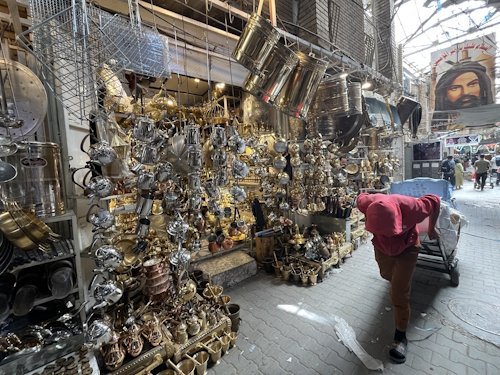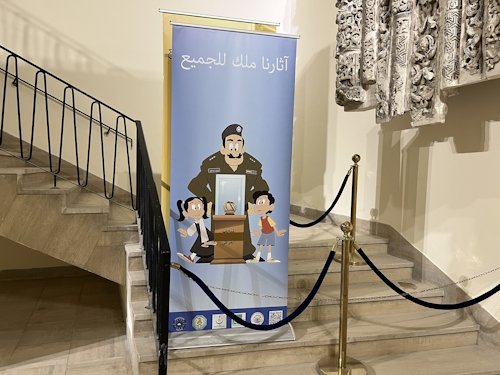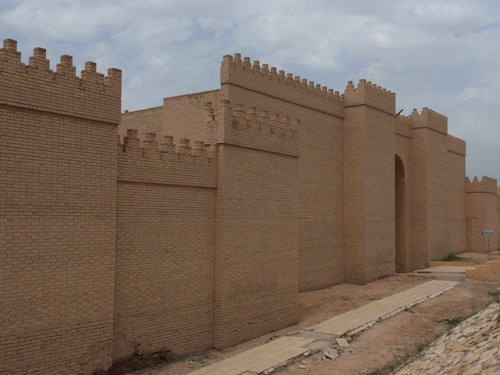Els Slots
Top Tips for Travelling to Iraq
My first visit to Iraq was in 2014, when I covered semi-autonomous Iraqi Kurdistan. In April 2025, I went to what in tourism is known as ‘Federal Iraq’ (although that would be a more appropriate name for the entire country, including the Kurdish governorate). As it covers the major sites of Ancient Mesopotamia, it is definitely the most interesting part and it holds 5 out of the country's 6 WHS. Herewith are some tips for travelling to Iraq as a WH Traveller.

1. Don’t expect it to be pretty
Most of it is a typical flat Arab desert landscape, littered with plastic waste. The monuments generally also lack the refinement and colour of those in neighbouring Iran. Unless roadside portraits of Shia clerics particularly enamour you, your best bet for beauty are the statues and sculptures in the National Museum in Baghdad.
2. The safety situation normalizes rapidly
Many western countries (such as Germany, Australia, USA) still raise a red flag for all travel to Iraq, although the UK , for example, has lowered its warnings for the southern areas, including Baghdad, Babylon, Najaf, and the Marshes. On the ground, it all feels calm and safe and the people are friendly to foreigners, no matter where they are from. Nowhere does it feel oppressive, and you can walk the streets freely. Our local guide said that it had been like this for about 4-5 years, and that it normalizes more and more every quarter. The only reminder of worse times is the high number of checkpoints along the roads between governorates and while entering cities. These do slow you down a bit, but we passed all without incident within a few minutes and they never did look at us individually (just a chat with the driver/local guide and browse through a selection of the passports).

3. There’s a lot of potential for more WHS
The coverage of the most important periods in Iraqi history is fairly balanced, but 6 WHS isn’t a lot for a country of its size and importance (Iran has 28 WHS!). I think Iraq can easily have 8-10 more. Ordered by historical period, candidates are:
- Prehistory (0): the Shanidar Cave as an important Neanderthal site (one of the largest single-site collections of Neanderthal fossils ever found), not on T List but also a prominent role in the Iraq National Museum.
- Ancient Mesopotamia (3): Sumerian at Ur/Uruk , Assyrian at Ashur , Neo-Babylonian at Babylon . Well-covered, but as it is Iraq’s unique specialty, maybe Nineveh , Nimrud or Nippur could be added as well (though these are in a poor state).
- There’s nothing from the 2 centuries-long rule of the Persian Achaemenids: worth a mention here are the rock-cut tombs of Qizqapan in Kurdistan region.
- Classical Antiquity (1): the Parthians at Hatra , but there’s none from the Sassanids, this should be covered by Ctesiphon (not on T List).
- Islamic Conquest (1): Abbasids ( Samarra ), could/should have Old Baghdad too.
- Turkic and Mongol dynasties (0): the TWHS Old City of Mosul should cover this, as its landmark mosque is from the Turkic Zengic dynasty.
- Ottoman Empire (1): Erbil WHS has an Ottoman street plan. The Baghdad and Mosul sites also have significant Ottoman remains.
- 20th century (0): could be covered by some sites in continuous use, such as the Yezidi Lalish Temple or the Wadi Al-Salam Cemetery in Najaf (both on T List)

4. Other factors have caused more lasting damage than the 2003-2017 wars
Any damage from the 2003 Invasion and the subsequent Iraqi Civil War on the Iraqi (T)WHS now seems to have been erased or at least patched up as best as they could. Even the impact of the ISIS iconoclasts in the end was fairly limited: only Mosul and Nimrud still show the signs. Still, the state of conservation of all sites leaves a lot to be desired. A particular Iraqi problem is what to do with the unbridled reconstructions of poor quality, which were popular during the Saddam era. ICOMOS seems to suggest that removing them would be best in the end, but that would be a hell of a job. Babylon (photo 3) is covered with them and also at other sites, they are prominently visible. I also found it remarkable how little excavation work has been done at virtually all sites. Site interpretation is generally quite poor too, so better to read up beforehand.
More on
Els SlotsComments
No comments yet.
